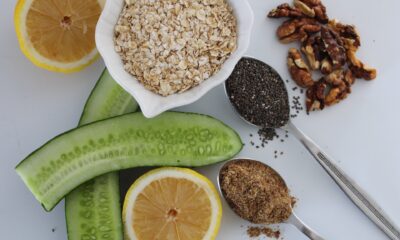Nutrition
Wheat Muffins – A List of Healthy Recipes

I’m not a feminist, but I strongly dislike men who believe (and voice their opinions loudly) that women should remain in the kitchen.
It just shows how insensitive we can be towards the fairer relation, who, by now, are unhappy with this kind of talk but can do little to bang some sense into some people’s heads.
This comes across as ridiculously ignorant, considering that some of the world’s best chefs are actually men. Yes, even if women have been in the kitchen for centuries now.
If that’s not enough, a tech guru of the 60s, Richard Stallman, goes as far as to liken computer programs to creating new recipes, regardless of what one intends to cook.
Speaking of recipes and computer programming and my obvious lack of experience with either, let’s look at some healthy recipes for wheat muffins. But before that, let’s cover a few facts about muffins in general.
Muffins – A Few Interesting Facts
Apart from the obvious fact that there’s a clear difference between the cupcake and the muffin, almost everyone knows that a muffin is a common choice to eat at breakfast or even when one is having a cup of tea.
The latter doesn’t use icing or is made with yeast and tends to be less sweet than the former.
What’s also obvious about this type of quick bread or semi-sweet cake is that there are a number of varieties, mostly based on a particular ingredient such as blueberries, poppy seeds, pumpkins, banana, cinnamon, lemon, carrot, almond, and strawberry and so on and so forth.
You probably don’t know that Minnesota’s official muffin is the blueberry muffin. New York has one, too – it’s the apple muffin. All the states, if not most of them, have their official state muffin.
But the English also have their own muffin, which has a history longer than its American variant, thanks to an old rhyme of the Muffin Man who came selling muffins from door to door and lived on Drury Lane.
Due to a decline in baking and a following of gourmet coffee, the 60s and 70s took away whatever nourishment that muffins had to offer, thanks to the inclusion of preservatives such as sugar and fat.
On that note, it’s a good idea to share a couple of healthy recipes for wheat muffins that could possibly change the way you look at muffins as a choice for breakfast or as a snack.
Wheat Muffins – A List of Healthy Recipes
Right off the bat, there are definite benefits to eating English muffins, regardless of the various types that are already available. It shouldn’t be a stretch to consider that wheat muffins can offer the same benefits… as long as one can make sure that they aren’t too dry.
For that, here is a list of tips on how to make the best muffins and another set of tips on making the perfect muffins.
As for healthy muffin recipes, here is how to make wheat muffins without much effort. Apart from that, here is another list of recipes for healthy muffins that aren’t made of whole wheat.
In Closing
So, are there any other recipes for healthy wheat muffins you would like to share?
Nutrition
Peanut Nutrition – What You Need to Know
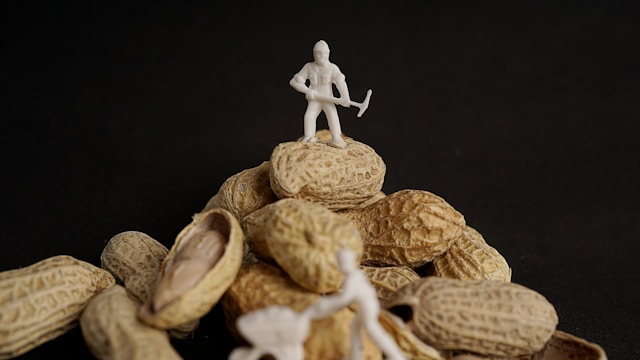
The world of nutritional health is surprising, to say the least. Ever so often we come across health articles that speak of a food’s benefits that we could hardly conceive of as a link between the two.
It’s true.
While water, milk, vegetables and fruits as well as lean meats are associated with better health, the one that surprised me the most was the benefits linked with peanuts.
The verdict on peanut nutrition is out, and it looks more than good…
Peanuts – Are They Any Good?
Yes, peanuts are good for you as they contain almost thirty essential nutrients. This can only mean one thing: these little beans will boost your health, no matter how you eat them.
Some of these nutrients include large amounts of protein as well as others such as folate, manganese, tryptophan, copper, Vitamin B2 and B3 – all tied with some benefits or the other.
So, while the matter on how beneficial peanuts are when it comes to the nutrients it has is settled, the next obvious question is whether or not consuming peanuts amounts to too many calories.
One hundred grams of peanuts amounts to 500 calories or so but don’t worry, most of this energy is dissipated, thanks to the fact that most people don’t chew nuts all that well. This is why a study found that heart health can be improved by eating peanuts while not gaining weight in the process.
But its uses isn’t limited to salted peanuts, peanut butter or being in candy form but also extends to industrial uses such as an ingredient for paint, cosmetics and soaps too.
Thanks to its nutritional value, peanuts are also used along with flour as paste to feed malnourished children and adults… and it has worked wonders so far.
Peanut Nutrition – What You Need to Know
So there’s no doubt that the answer to the question, is eating peanuts healthy is a proper ‘yes’.
But how might one ask?
As mentioned earlier, there are a number of health benefits associated with peanuts but the ones that really get your attention is the way it keeps you heart healthy since cardiovascular disease is the number one reason for deaths in the United States.
But that’s not all, they’re also known to lower the risk of breast cancer as well and even if they’re full of calories, they don’t add up to much since they are “very filling”.
Apart from lowering cholesterol levels and improving blood circulation while also being a proper brain food in boosting memory. But that’s not all – eating peanuts prevents gallstones, promotes fertility, fights depression and age-related cognitive decline.
The only documented pitfall is in eating raw peanuts, thanks to the presence of fungi, aflatoxins and Cyclopiazonic acid.
But apart from that, and once you roast raw peanuts, we’re good to go…
In Closing
So, what are your thoughts about peanut nutrition? Feel free to share them in the comments section below.
Also, here is an article that tells you all you need to know about natural peanut butter.
Nutrition
What Happened to Organic Raw Almonds?
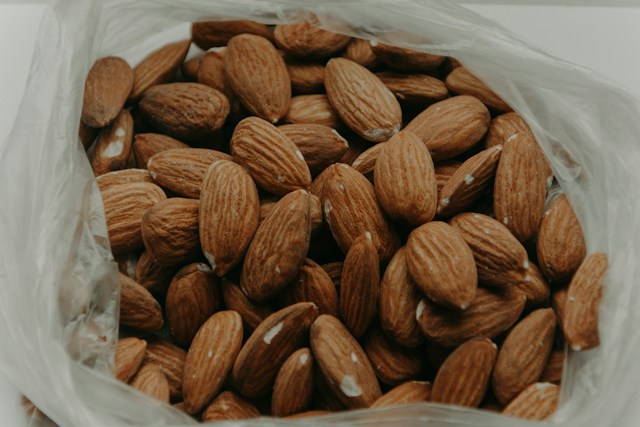
Salmonella, everyone’s favorite dessert, was linked to organic raw almonds in an unconventional and isolated incident, but it caused the California Almond Board to pass a ruling that requires all manufactured raw almonds to be pasteurized before hitting the supermarkets.
But in looking back to those 2 years ago, I’m sure we’d all posthumously agree: The jury’s out on this one. The ruling is just bizarre (for lack of a better word) and rather reflective of George Bush’ term at the White House (sorry, couldn’t help but take a dig) with the almond growers (who’ve undergone serious losses) and the customers (who have to look for outside sources for raw almonds) at the receiving end of it all.
Why? Due to two isolated cases of the salmonella infection…
And what’s hard to understand is that almost 40,000 Americans die each year from a salmonella infection and I fail to understand (if we go by the numbers) how banning the selling of raw almonds will make the situation any better! Methinks, a result of misdirected enthusiasm, perhaps! Or is it another conspiracy theory?
So, in using logic, does this mean that the government should ban all fresh produce?
Why I ask this is because tomatoes, spinach, green onions, peanuts, grapes, melons, lettuce, and sprouts have at some point or the other over the past ten years been involved in salmonella outbreaks and I’m sure some of us are looking for a little consistency here!
Benefits of Organic Raw Almonds
And the very reason why I’ve taken sometime to rehash this matter is because ‘raw almonds’ (just like all those fresh veggies mentioned above) are definitely beneficial (as if that it isn’t obvious enough). In the Ayurvedic system of medicine, it is considered to be beneficial for the brain and nervous system and to help build one’s intellectual levels and maintain it as well.
According to Western Medicine, it improves one’s complexion, improves movement of food through the colon and prevents cancer. Very importantly, it is proven to maintain good cardiovascular health due to the presence of monounsaturated fat (‘good’ fat).
Now, the reason why people are making a big fuss about why almonds are being pasteurized is because, first and foremost, they know (and feel very strongly about) their right to choose nutrition suited to their needs is being regulated by the government which is an open contradiction to their constitutional rights.
Most importantly, the reason why people are so upset with this mandatory pasteurization procedure is because one method involves the use of propylene oxide which was used earlier as an insecticide, a known carcinogen.
With the discovery that it can cause cancer, California officials terminated its use. And now, it’s being used to pasteurize almonds and can cause similar side-effects. The other two methods such as Steam pasteurization and High heat cause almonds to lose their nutritional value, which means that the nutritional benefits mentioned above are lost too.
It’s rather unfortunate but true, so let’s hope that common sense prevails in the near future and almond lovers are able to enjoy them truly raw, rather than being lied to about raw almonds being currently made available in the market although pasteurized through these methods.
Have you ever tried true organic raw almonds?
Nutrition
Almond Milk Nutrition
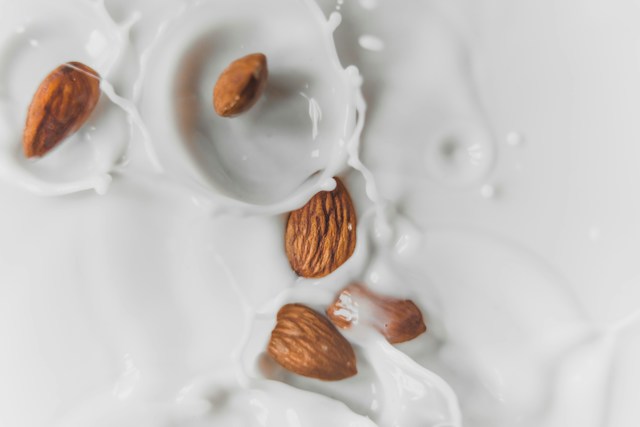
ALmond Milk Nutrition
Just yesterday afternoon, a neighbor showed me this eleven-stringed instrument known as the ‘Oud’, which is very much like a guitar but is played very differently.
I was so fascinated by the absence of frets, the vibrato and harmonics that are played constantly when watching a professional perform for over six minutes while playing one their traditional wedding songs on the Oud.
And somewhere at the back of mind I thought, “Hey! These guys aren’t so bad either…” considering the social stigma that effects these chaps wherever they go. Even though the Islamic world is a closed and a painfully rigid culture that is far too controlled by their sense of spirituality, it felt right to consider that as they have contributed quite a bit to the world in every field even including nutrition.
For example, take almond milk, which has its uses as a nutritious baby food and is consumed as a healthy drink in the Middle East as well, and is catching up as a healthy replacement for those with allergies to milk (due to its casein content) and for those who wouldn’t touch a bottle of soy milk with a ten-foot pole.
Almonds
Whether based on superstition or not, almonds have always been considered nutritious in different parts of the world. In India, almonds are considered good for the brain (as if we don’t have enough already that causes enough trouble!) while in China, it is considered to be a symbol of enduring sadness and female beauty.
As quaint as all this sounds for the history buffs, this drupe (not nut) has a host of benefits that pertain to health & nutrition as well as in other areas such as spirituality and so on and so forth.
And so we before we learn how to make almond milk, let’s look at the benefits of drinking almond milk.
1) Rich in Vitamin E, an antioxidant, which is excellent for those undergoing detoxification programs.
2) Lowers the risk of heart attacks, drops bad cholesterol levels and helps in weight loss due to its high unsaturated fat levels.
3) The best alternative for lactose intolerance, and for those who aren’t so fond of the taste of milk (but not necessarily allergic to it), almond milks comes with a light, nutty and crisp taste.
4) With a calorie amount of 70, one can down a glass of almond milk, without destroying your diet. Incidentally, the number of calories for cow’s milk is 86…
5) Lastly, it works as an excellent substitute for vegans and for religious reasons and finally, lasts much longer than milk as it doesn’t need to be refrigerated.
How to prepare Almond Milk
It’s very easy to prepare almond milk which can be done in 15 minutes. And here’s how:
What you need: 4 cups of water, a cup of almonds
Step 1: Add the 4 cups of water to the cup of almonds, and cover it with a lid.
Step 2: Refrigerate the container for 1-2 days.
Step 3: Next, blend the mixture of almonds and water until you get a smooth mixture.
Step 4: Use a cheesecloth to strain the smooth mixture obtained.
Step 5: Go ahead and drink like you would drink normal milk or use it for several dishes and other preparations that you can make normally.
In Closing
And so, some of us who aren’t so fond of the Soy Milk can finally bid it good bye. Hehe.
-

 Pet10 months ago
Pet10 months agoDog Training Tips: Throw me a bone, will you?
-
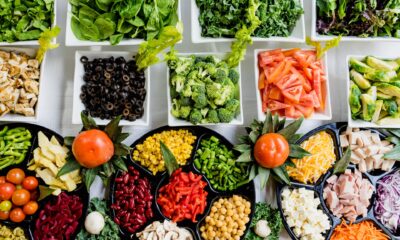
 Health10 months ago
Health10 months agoWhat Is Healthy?
-

 Entertainment2 months ago
Entertainment2 months agoYoungTube 101: Tapping the Youthful Side of Online Video
-

 Fitness4 months ago
Fitness4 months agoThe Allure of Sports T-Shirts: A Blend of Style and Team Spirit:
-

 Fitness10 months ago
Fitness10 months agoTotal Mind and Body Fitness Blog Carnival 165
-

 Entertainment10 months ago
Entertainment10 months ago4 Reasons Why She Doesn’t Call You Back
-

 Fitness9 months ago
Fitness9 months agoTotal Mind and Body Fitness Blog Carnival 141
-

 Pet10 months ago
Pet10 months agoBest Dog Foods







